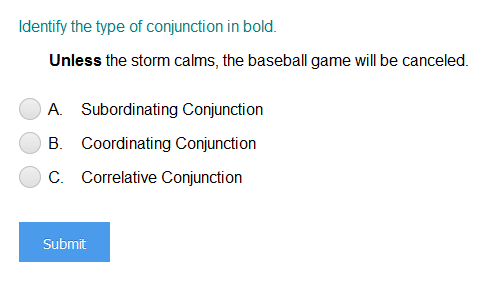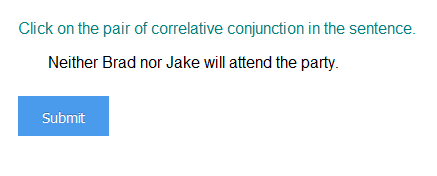- HOME
- QUIZZES
- CONJUNCTION
IDENTIFYING THE CONJUNCTION AS COORDINATING OR SUBORDINATING PART 3
Identifying the Conjunction as Coordinating or Subordinating Part 3
ds
A B C D E F G H I J K L M N O P Q R S T U V W X Y Z
Help
The correct answer is
Remember :
The smallest number is the one that comes first while counting.
Solution :
To arrange the given numbers in order from smallest to greatest, find the smallest number among all the given numbers.
21,27,23
21 is the smallest number.



